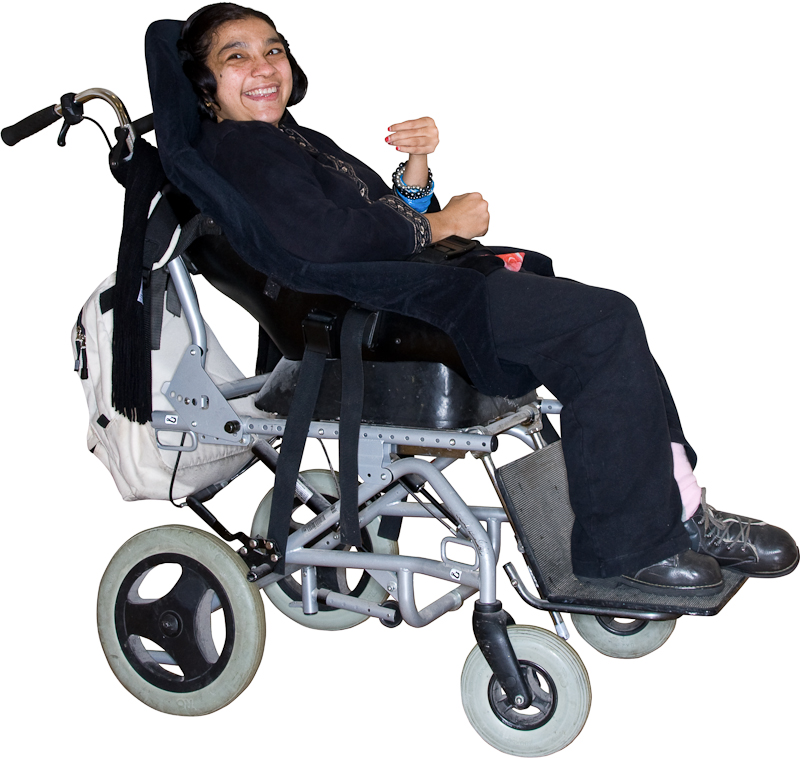
The issue of choking has had a high profile for learning disability service providers in recent years due largely to press reports of a number of preventable deaths in services.
The issue has been the source of significant anxiety for operational managers in services as they have sought to ensure they can demonstrate they have, at least, comprehensively risk managed, and at best, that their teams are achieving best practice.
This new report commissioned by Hampshire Safeguarding attempts to connect the dots specifically between five deaths in that authority, but with one eye on the wider national picture. The report attempts to fill something of a void for this type of guidance but does not present new evidence. Rather it seeks to create a list of new recommendations which can serve to support professionals as they address the risks.

Swallowing and choking issues affect learning disabilities services every day, but published data is not available to quantify the extent of the problem.
Methods
Hampshire identified a multi-disciplinary team (MDT) of 25 people including the Police, Care Quality Commission (CQC), Advocacy and the chair of the local Mencap society in addition to a wide range of Local Authority and NHS representatives to complete this work. It is not clear what role each played in the process and it is noticeable that there does not appear to be a supported person or carer representative on the team. Similarly, there is only one service delivery manager although others may have had that responsibility as part of their role.
To increase the sample from the five available incidents from Hampshire, requests were made for reported incidents in other authorities and they also used secondary sources which included narratives from newspaper articles. I would suggest that the fact that the response from Safeguarding authorities was poor is something of a concern. National statistical supporting data was sought from a number of sources but the report authors point out that there is no single body collecting data nationally, but rather there are a number of bodies which attempt to do this.
A review of media reports identified three similarities between the incidents:
- Lack of carer supervision
- Inconsistent first aid
- Failure to follow care plans.
These observations have informed the later work. The methodology for the analysis of the specific incidents and subsequent conclusions and recommendations are not made clear. We are informed that 46 caregivers were interviewed as part of the work on care plans. Commentary and recommendations are categorised as follows:
- Commissioning and monitoring care
- Assessing the risk of choking
- The Mental Capacity Act and advocacy
- Developing the Individual Care Plan
- Training and health promotion
- Going into hospital
- Reporting choking incidents

Media interest in choking risk has given the issue national coverage
Strengths and limitations
In total, the report suggests 25 recommendations which are listed separately in the narrative and as a list at the back.
These directives are aimed at a number of different recipients including social workers, primary care services, health commissioners, trainers, staff and ‘services’. They lack consistency in presentation, with some recommendations making clear where the responsibility lies e.g. ‘Social Workers…must check that individual are receiving dental checks’ whilst others are vague, for example ‘Adults with a disability should be supported to take up annual health checks’. My sense is that the recommendations have been described by different members of the team and they perhaps worked separately on the categories as work-streams.
In addition to this lack of consistency, there appears to have been little co-ordination of the list to create order or structure. This may serve to confuse accountability issues and heighten anxiety in relation to expectations on specific roles.
The report will act as a well timed re-focus for service providers on mental capacity issues and this is, I suspect, an often overlooked area in relation to choking. The recommendations are clear and direct in this instance. The directive relates to stages in the process; consent to assessment in the first instance and secondly the choice to eat foods which may present an increased risk of choking. Capacity and subsequent best interests decisions are stated as required in both instances. The potential need for DoLS assessment if restricted access to high risk foods is any part of the plan, is also well pointed out.
I believe the report does, however, have two key omissions:
- In the Care Plan section we are told that Caregivers identify “time-pressures, staff turnover, and insufficient time to review SALT assessments” as reasons why they may fail to accept responsibility for support guidelines. None of the recommendations make any attempt to address this issue which is fundamental to almost every instance of choking. The report could have taken the opportunity to highlight that this is a potential consequence of year on year cuts in delivery too.
- First aid is only very lightly touched upon and only with reference to training. This overlooks one of the critical, and often very difficult to resolve, problems of administering first aid to people in wheelchairs. In particular the issue of moulded wheelchairs can prove to be almost impossible for service managers and support staff to get useful guidance and training on. Given the high prevalence of choking risk in people who require a moulded wheelchair, this is a real weakness.

Moulded wheelchairs create a need for complex and specific first aid training
Summary
- Part of the report’s conclusion is the recommendation that the Department of Health extend the inquiry and collect national data on the issue. I believe that a key value of this work is to highlight the extent of the issue of choking in people with a learning disability and the lack of data and good quality guidance that is currently available.
- This guidance will disappoint operational managers who are looking for a toolkit or flowchart to help them cover all bases.
- Some of the tools included are also weak in practical terms, e.g. the GP’s assessment tool for identifying choking risk will not help the average Service Manager.
- However, there are other useful good practice examples and links in here, and the guidance with respect to the Mental Capacity Act is crucial.
Link
Reducing the risk of choking for people with a learning disability. A Multi agency review in Hampshire (PDF). Hampshire Safeguarding Adults Board Multi-agency partnership, 2013.

Choking in people with learning disabilities, what can be done to reduce the risk?… http://t.co/Lp9Fr5WmOZ
Today @NickBurton01 highlights a multi-agency review on reducing choking risk for people with a learning disability http://t.co/maQSuWBETP
Below is information on our ‘Help Stop Choking’ project which we are currently devloping into a webapp.
A unique project involving a service user with learning disability bagged one of the top prize at this year’s Patient Safety and Care Awards in London.
Belfast Trust Speech & Language Therapist Angela Crocker working with service user, John, and the Learning Disability Team won this prestigious award under the category Preventing Avoidable Harm, by developing a DVD called ‘Help stop Choking.’
Presenting the award, the judges commended Angela and John on the uniqueness of the project, which was the only one to include a service user and they referenced the huge impact the DVD could make by preventing avoidable deaths by choking. The judges said that this DVD should be used by all Learning Disability services across the UK as core training and awareness raising for both staff and service users.
About the DVD
Angela worked with John, and the Learning Disability Team in the Trust to develop the ‘Help stop Choking’ DVD. ‘Help stop Choking’ an accessible DVD based on a service user’s experience to help increase awareness of choking, promote safe eating strategies and reduce avoidable mortality and adverse harm effects from choking. John hopes that by sharing his story it will help to improve service user experience and help other people reduce their risk of choking.
Choking has been identified by the National Patient Safety Agency as one of the leading causes of preventable death in people with learning disability. The DVD could also be useful in other services including Dementia care where the risk of choking is significantly higher.
Please watch our ‘Help Stop Choking’ song on YouTube . http://youtu.be/AEwDb3ZNkAc to help raise awareness of the risk of choking for adults with a learning disability. The video features stills from the ‘Help Stop Choking’ DVD which won the prestigious @PSafetyAwards #PSAwards 2014. You can also follow us on twitter @belfasttrust #HelpStopChoking
Hi Angela,
thanks for your comment. Always great to be able to point to resources like to the DVD you mention. Congratulations to you and John on the award and please let us know when the web app is availab;e,
john
Thanks for the link Angela. Look forward to the app.
Hi Angela
Congratulations to you and John on winning the award. I am frequently asked about how best to support people with learning disabilities to reduce the risk of choking and have watched your youtube video and would be very interested to see the DVD you have produced is it available to purchase and if so where could I get a copy
Kind Regards
ANgela